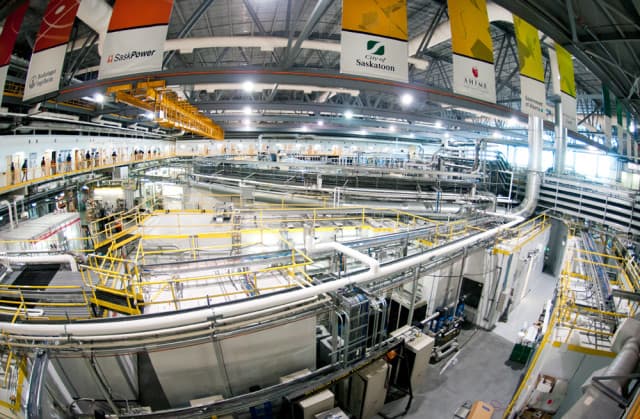
The Canadian Foundation for Innovation has agreed to give the Canadian Light Source $67 million to fund 40 per cent of its operating costs over the next four to five years. The CLS must now find additional sources of funding for the remaining 60 per cent of the operating budget — and has about three years to do so.
The Canadian Light Source — also known as the synchrotron — has lined up $67 million in funding before its upcoming four year budget cycle even begins. But the search for cash continues.
The CLS confirmed Jan. 22 that it will receive up to 40 per cent, or $67 million, of its operating budget over the next four years from the Canadian Foundation for Innovation. However, the CFI will withdraw some of that funding if the CLS does not manage to secure the remaining 60 per cent of its operating budget by the end of the fiscal cycle.
The fiscal cycle is a four to five year period that the CLS bases its budget on. The first two to three years are spent securing funding for the current fiscal period while the last year is spent finding funds for the next period. If the CLS does not have all of its funding ensured by the third year, it may cause problems including postponing needed maintenance and repairs.
The announcement comes at the end of the latest budget phase as the CLS searches to secure funding for the next circuit, which begins in the 2013-14 fiscal year.
Currently estimated at $40 million, the 2013-14 CLS operating budget is expected to increase by five per cent each year during the four to five years of the next phase.
The facility’s operating budget covers the costs of maintenance, salaries and power — which is paid by the CLS itself as it is a separate organization from the university.
Josef Hormes, executive director of the CLS, said the $67 million from the CFI is good news. However, finding the remaining funding for the facility may prove to be difficult.
“The economic situation in Canada is of course not perfect for funding research,” Hormes said. “We are all aware of that and we tried already to cut back our budget to what is necessary to operate the facility without negative impact on our users.”
For the next four years, the CLS will receive $5.6 million per year from the Natural Sciences and Engineering Research Council of Canada as well three million dollars a year from the Canadian Institutes of Health Research.
No agreement has been made in writing yet, but the Saskatchewan government has confirmed it will provide approximately three million dollars for the CLS operating budget in the 2013-14 fiscal year.
“The province is not making a commitment in writing because their budget cycle is year-by-year, but they confirmed verbally that they will stay at the table and they will support us,” Hormes said.
Western Economic Diversification Canada, an agency that promotes innovation, industry diversification and business development in Western Canada, may provide up to three million dollars over two years for the facility’s operating budget if the CLS can show that it is committed to strengthening its collaborations with industries and businesses.
The CLS submitted a proposal to the WEDC on how it will continue to establish long-term relationships with western Canadian businesses in coming years. The facility is currently waiting for the proposal to be accepted.
The CLS currently partners with small businesses by providing subsidized research time through funding received from WEDC.
“Those small companies can not really afford to pay for our service because it is an expensive business,” Hormes said.
“We are trying to help those companies that are creating jobs and that is exactly what [WEDC’s] mission is.”
Securing funding for the operating budget is important not only for the CLS and its own research projects, but also in order to provide a facility for researchers that are not from the U of S.
Beamtime at the CLS is valuable to researchers who have to book months to years in advance in order to work on their projects.
Following a failure of the facility’s main cooling plant in October that suspended all research activity at the CLS for over a month, all 15 beamlines are now operational.
The CLS is planning to have seven more beamlines in operation by 2015. The construction of these additional beamlines will be funded in part by the CFI as a capital investment as well as by other universities that are interested in doing research at the facility.
[box type=”info” border=”full”]The official opening of the CLS was Oct. 22, 2004. The first light was recorded Dec. 10, 2003. The CLS is the only synchrotron facility in Canada.
Electrons are accelerated nearly to the speed of light. Then the electrons are transferred into a closed chamber where banding magnets accelerate and bend the electrons to produce synchrotron light. Using this light, the structure of molecules can be studied.[/box]
—
Photo: Raisa Pezderic/The Sheaf